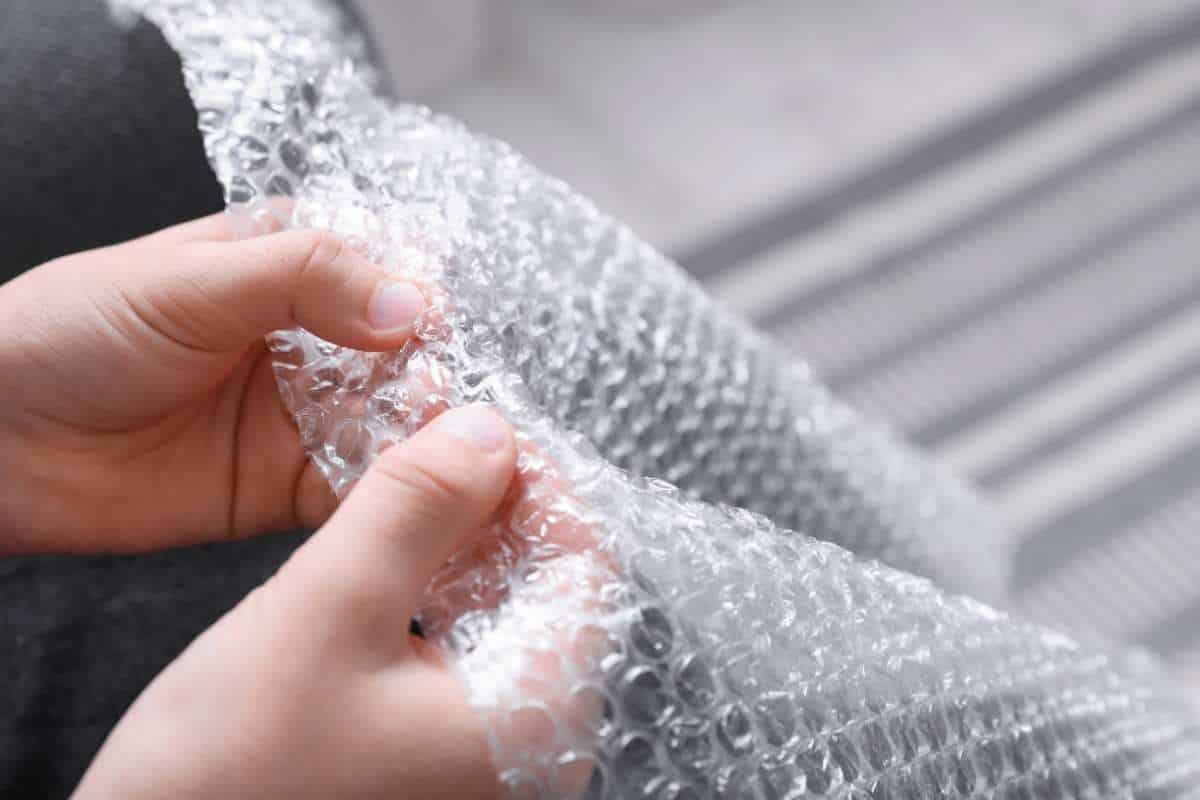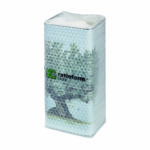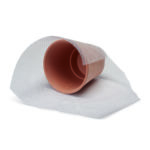A lot has happened in this area since the development of bubble wrap by Alfred Fielding and Marc Chavannes in 1957. And all to provide you with the best possible protection for your goods. We have already reported on how the air gets into the cushions, today we want to look at the subtle differences many types of air cushions take a closer look.
Fundamental differences
Bubble wrap provides protection Shocks, vibrations and what may arise from it Damage like ![]() scratches or breakage – both on the surface of the products and inside. It also offers protection against dust and moisture. Basically we differentiate between 2-layer and 3-layer as well as Small and large studded bubble wrap. 2-layer bubble wrap is ideal for light to medium-heavy products that can only be transported or stored for a short period of time. Likewise for products whose surfaces are not too sensitive to scratches, such as chairs or smaller clay and ceramic vessels. The 3-layer film, on the other hand keeps the air inside longer and can therefore better protect the goods on long transport routes. They are suitable for large furniture and products with very sensitive surfaces such as televisions or glass.
scratches or breakage – both on the surface of the products and inside. It also offers protection against dust and moisture. Basically we differentiate between 2-layer and 3-layer as well as Small and large studded bubble wrap. 2-layer bubble wrap is ideal for light to medium-heavy products that can only be transported or stored for a short period of time. Likewise for products whose surfaces are not too sensitive to scratches, such as chairs or smaller clay and ceramic vessels. The 3-layer film, on the other hand keeps the air inside longer and can therefore better protect the goods on long transport routes. They are suitable for large furniture and products with very sensitive surfaces such as televisions or glass.
Large nubs are suitable for upholstering uneven and angular objectssmall nubs, on the other hand, are ideal for smooth surfaces. Large studded bubble wrap is also more suitable for filling cavities.
Of course there are differences in the individual categories Film thickness, a 2-layer bubble wrap can have a film thickness of 35 µ or 60 µ. All just to better match the film to the products to be packaged.
The following table provides a brief overview:
| small nubby | big-nobbed | |
| 2-ply |
|
|
| 3-ply
|
|
|
They are particularly practical perforated bubble wrap, because with such a film you don’t need any other cutting device. This makes handling even easier. Likewise the bubble wrap from the Donation box.
We should also particularly emphasize this AirCap® barrier bubble wrap. This has an additional barrier layer made of polyamides (PA). The barrier layer ensures even better encapsulation of the air in the knobs. Under prolonged pressure, the upholstery protection is still guaranteed: The Air stays up to 15 times longer in the foil than with conventional bubble wrap. The AirCap® barrier layer bubble wrap is ideal for long transport routes or longer storage. The special knob shape also saves up to 20% volumeas the nubs can be wrapped “into themselves” better.
By the way: Bubble wrap can now also be used sustainable! Fast-growing sugar cane is used as a raw material Bubble wrap terra. It optimally protects sensitive transport or storage goods with improved cushioning effect thanks to the lower stud height and smaller diameter. The bio-based film can be produced in a climate-neutral manner and has more than 93% green PE share made from sugarcane ethanol – with the same chemical and molecular structures as Fossil PE. In addition, there is environmentally friendly bubble wrap and bubble bag, which are made from more than 50% recycled material in Germany.
But now into the details: Air cushions perfectly tailored to your intended use
In addition to the basic differences just described, there are now additional ones different types of foil in itself as well as various coatingsthat can be added to the bubble wrap. In addition to the protective properties already described, there are additional features for special purposes.

Let’s start with that antistatic bubble wrap: This is a conductive bubble wrap to protect electrostatically sensitive products from the electronics and high-tech sectors. This can be easily recognized by its pink/pink color.
 Electric conductive bubble wrap: In contrast to the antistatic film, this is permanently conductive. We have described in detail what exactly this difference means here. The black color of the film also makes it opaque. It is ideal for packaging sensitive electronic components and data carriers.
Electric conductive bubble wrap: In contrast to the antistatic film, this is permanently conductive. We have described in detail what exactly this difference means here. The black color of the film also makes it opaque. It is ideal for packaging sensitive electronic components and data carriers.
VCI bubble wrap: This film combines the impact protection of the air cushions with the corrosion protection of the VCI active ingredient (you can find out how this works here). This film is therefore ideal for particularly sensitive metallic materials. It is easy to recognize because of its blue or yellow color.
The different coatings at a glance:
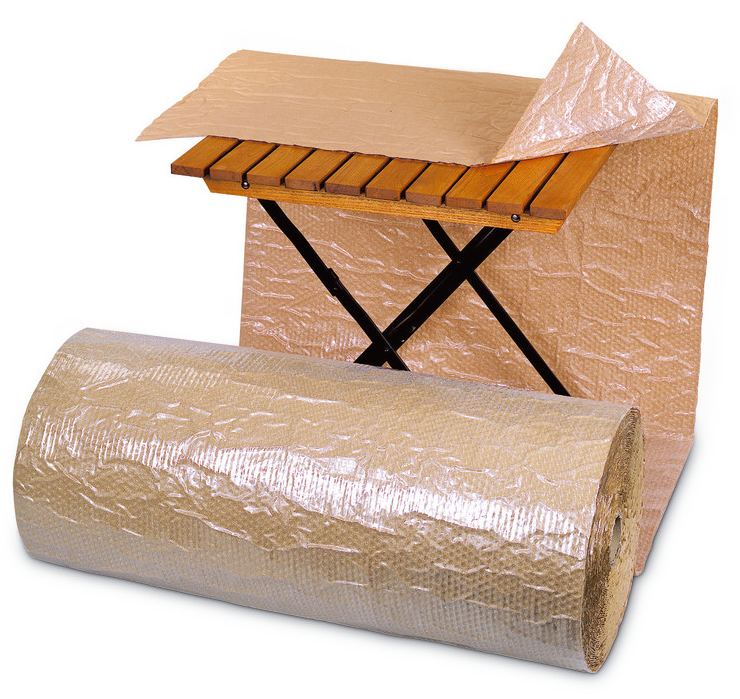 |
 |
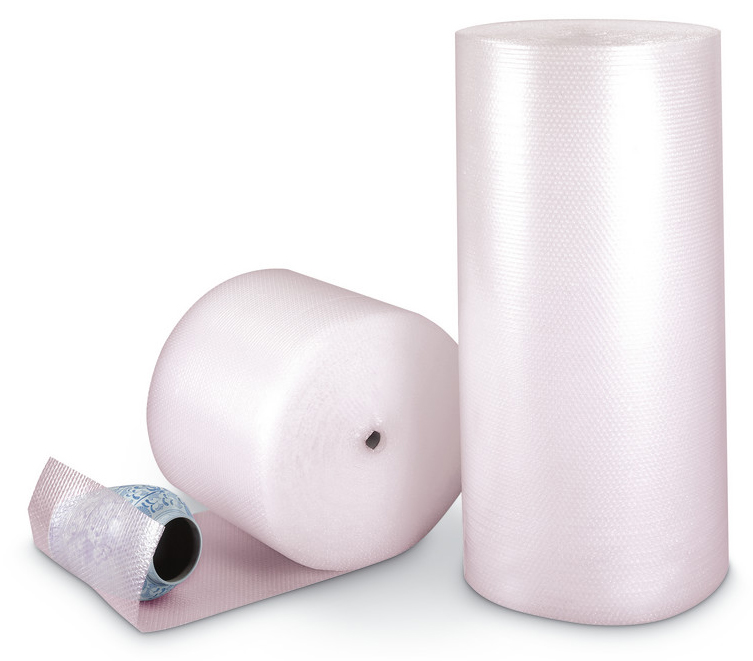 |
 |
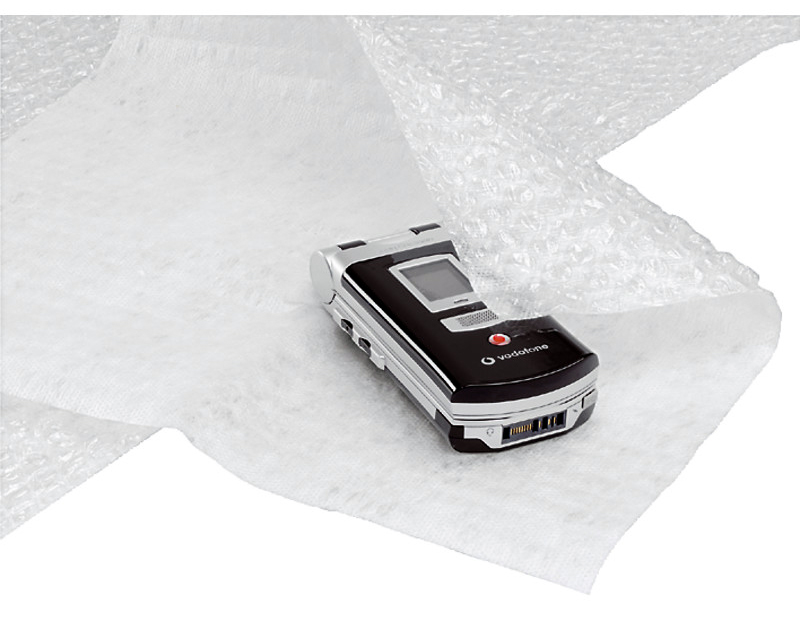 |
| Paper-coated bubble wrap | Metallized bubble wrap | Self-adhesive bubble wrap | Foam coated bubble wrap | Fleece coated bubble wrap |
| Combination of kraft paper and bubble wrapAdvantage: even easier to label
to protect products with sensitive or sharp corners and edges, such as high-quality tiles or furniture |
Single-sided lamination with aluminum and therefore ideal for heat and cold insulation. Perfect for temperature-sensitive chemicals, cosmetics and food | wafer-thin adhesive layer on the knobs that can be removed without leaving any residue. Ideal for porcelain, ceramics, glass, car body parts, plastic surfaces (except PVC), tiles, painted metal cabinets | with additional foam coating that protects particularly sensitive product surfaces from scratches and reinforces impact protection. Ideal for products with highly sensitive surfaces, such as ceramic and glass items, painted items, mirrors, precious metals, marble | Fleece coating on the smooth sideIdeal for products with very sensitive surfaces such as glass, wood, precious metals, hardened paints, alloys, ceramics, marble |
A notice: When using self-adhesive bubble wrap to protect painted surfaces, it must be cured for at least 24 hours. Otherwise the paintwork can be damaged. To avoid application errors, please contact one of our packaging professionals. We’re here to help!
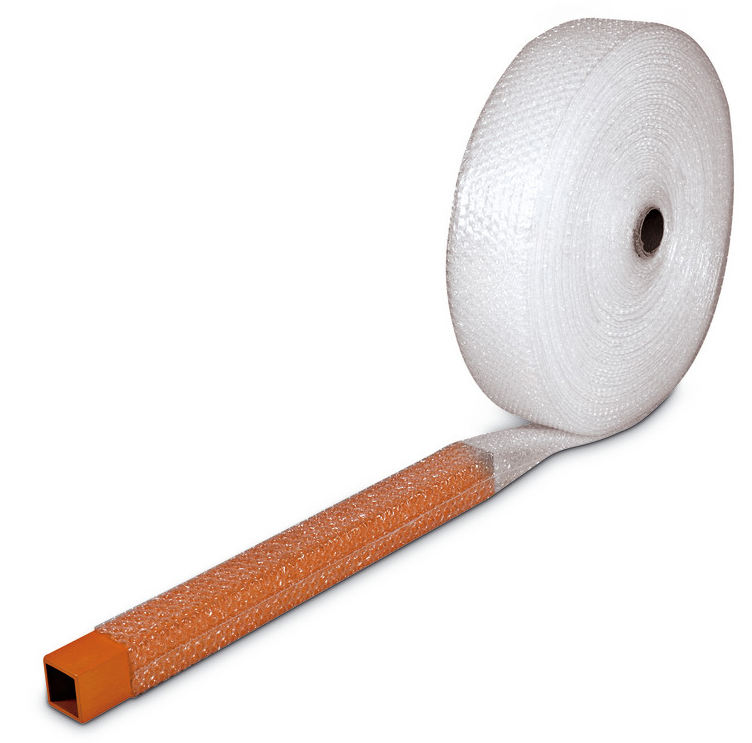
Most types of bubble wrap are also available as Bag (with or without self-adhesive) or as Tubular film, with which you can, among other things, make your own bag sizes. Bubble wrap is also an additional option Padding of mailing bags used.
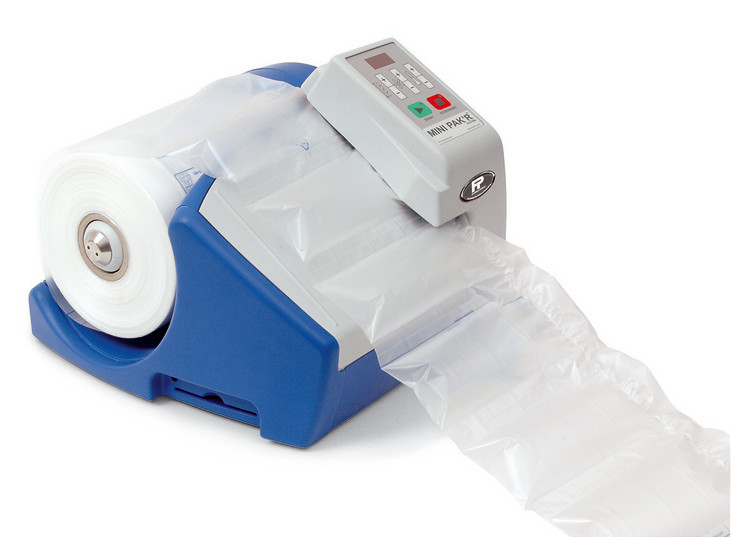 The next quality step would be air cushion cushion, for example Cell-O air cushions, Pillow Pak’r air cushions or the Novus air chamber mats. The even larger air cushions offer even better shock protection and are of course ideal for filling cavities with an even smaller consumption of material. However, you need a machine to produce the bubble cushions, so bubble wraps are easier to handle.
The next quality step would be air cushion cushion, for example Cell-O air cushions, Pillow Pak’r air cushions or the Novus air chamber mats. The even larger air cushions offer even better shock protection and are of course ideal for filling cavities with an even smaller consumption of material. However, you need a machine to produce the bubble cushions, so bubble wraps are easier to handle.
You can find our range of bubble wraps here ratioform online shop.
Which bubble wrap has convinced you so far?

